16 October 2017 Monday - Tarangire
National Park, Tanzania ~ Day 7
Oh, man, what a busy day. We were up
early, packed, and out the door of the hotel room in Arusha by
7:00am. I took one last photo of our cabin. Say goodbye to Internet
for a while, because we’re headed to our first national part in
Tanzania, called Tarangire.
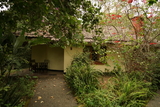
Traveling
through Arusha and across rural Tanzania, we saw some pretty
interesting things. Like this guy transporting his full-sized love
seat on his motorcycle! The photo isn’t great; it was taken in
haste through the window of the moving bus, but you get the idea.
It’s still not as good some of my Vietnam Travelogue photos though.
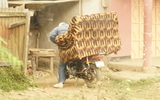
And
this woman carrying an absurd amount of tomatoes and other groceries
on her head.
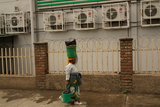
Here’s
a funny shot. Kathy happened to snap a photo just as a woman bent
down in front of another woman. The optical illusion makes it look
like the woman has a head on her butt though. Too funny not to share.

Here’s
a guy who must have lost his mule or something:
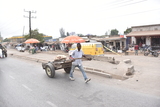
And
here’s a showroom floor for beds:
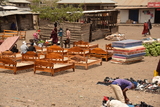
Before
we got into the countryside, Eki stopped at a small market where we
could exchange dollars into Tanzanian shillings. They have bigger
denominations. I exchanged a 20 dollar bill and got thousands of
shillings. We shouldn’t need many shillings, because all our meals
are included on the trip, and many shops accept dollars.

Eki
showed us a map of northern Tanzania, and the parks we’re going to
visit. We’ll see all three big parks: Tarangire, Ngorongoro, and of
course, Serengeti.
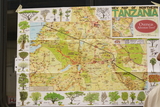
We
found some strange boxes hanging from certain trees. Eki said they
were beehives for producing honey. The only problem is: These are the
dreaded African Killer Bees. How Do you extract honey from a hive of
African Killer Bees? Very carefully.
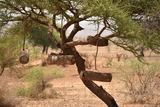
Out
in the countryside, we came across a group of three Maasai boys
dressed in black, with black and white face paint.

Naturally,
we had to stop the bus, get out, and take photos, in exchange for
some money (which our guide provided). That’s accepted practice, I
guess. Later in the day, we came across many other groups of boys in
similar garb.
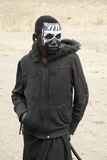
The
Maasai people are caught between the modern world and their ancient
traditions. For example, both Our Masai Mara guide, George, and our
Tanzania guide, Eki, said that of all the worldly lures the Maasai
have resisted, there’s one they simply could not resist: cell
phones. So cell phones are actually quite common (and inexpensive)
for the Maasai people. One of these kids had a fancy looking watch.
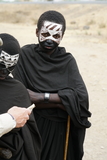
The
oddest thing, though, was the tennis shoes, which looked out of
place.
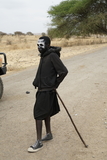
Why were they dressed like that instead
of the normal flamboyant red we usually see on the Maasai? George had
told us about this. Apparently this is a rite of passage for boys in
the Maasai tribe. When they’re 13 years old (I think), boys are
ritually circumcised, with no anesthetic. Up to that point, they are
given burns and other things to teach them how to endure pain. You
could see multiple burn marks on one of the boy’s arms:
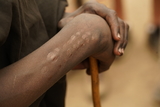
It
is important that they do not cry, yell, or scream during this
circumcision. If they cry, they are basically excommunicated from the
tribe. They’re considered outcasts, shunned by society, and thrown
out. A harsh reality. This is a rite of passage: In this way, the
Maasai tribe separates the warriors from the wimps.
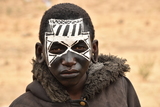
The
circumcision is done on multiple boys at a time, and it’s done in
public, with multiple tribe members watching. Ouch.
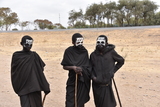
After
circumcision, the boys must dress in black and go away from home for
a certain period of time, to heal. Without any medicines,
antiseptics, or anything.
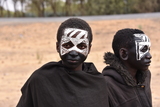
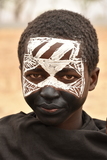
We
noticed that some of the boys had enlarged holes in their ears. That
reminded us of our nephew Mike, who did a similar thing, for some
strange reason. The Maasai apparently take it to the next level.

We were told that “female
circumcision” was now considered mutilation and has been illegal
for the past several (20+?) years. God, I hope so. That’s a
horrible, horrible thing.
The boys let us take a photo with them.
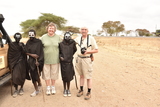
As we continued to drive across the
Tanzanian countryside, the conditions became more and more harsh, dry
and desert-like. We saw Maasai people out grazing their cattle. The
only problem is: To me, it looked like there was nothing for them to
eat. So basically, they’re just taking their cows out for a walk.
They were in a bit of a drought, so they needed rain badly to bring
back some vegetation.

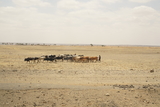
We
saw many traditional mud huts, like this one:
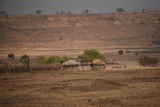
When
we got to Tarangire National Park, there were more features. We
started seeing those massive Baobab trees.
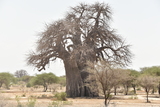
I
took this photo of Kathy because she’s such a tree-hugger. This is
a small Baobab tree.
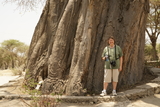
We
stopped and ate lunch at a park near the national park entrance with
modern bathrooms and such. There were some beautiful pseudo-stained
glass pieces made of pretty thick and colorful glass pieces. Each one
represented a season. Here is autumn:
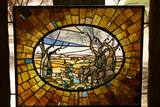
Here
is summer:
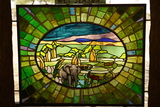
At
the park they had some animal skulls. The most interesting, I
thought, were the elephant skulls. Apparently, Tarangire is known for
its elephants.
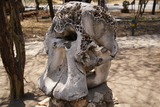
We
stopped and ate lunch there. A small band of black-faced vervet
monkeys hung around and tried to steal food. Two men were posted,
chasing them away while we ate our picnic lunches. Still, one of our
group (I think it was Jim) had his sandwich stolen by a naughty
monkey.
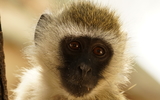
Inside
the park, we saw the hanging nests of weaver birds.
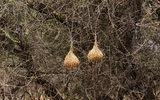
More
of those superb starlings.
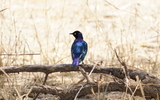
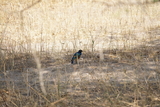
And
other birds
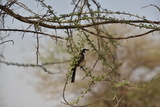
We
drove to a lake where we saw a bunch of birds, including some Great
Blue Herons and goofy-looking spoonbills.

We
drove a bit deeper in to the park and came across some giraffes.
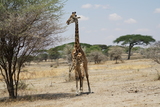
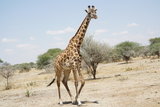
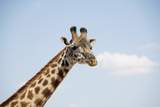
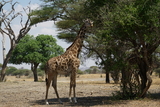
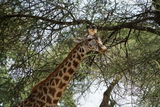
The
giraffes would reach up to get the highest possible (most tasty?)
leaves of the acacia tree. It amazes me that they don’t get pricked
with all those thorns.
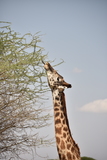
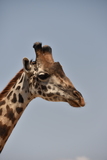
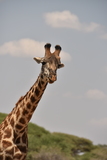
Then
we drove to the river and found a bunch of elephants. At this
location, the riverbed was completely dry, but the elephants dug a
couple holes deep enough to get at some water.
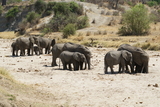
The
baby elephants were cute. They got right down into the hole with mom
and sucked up water.
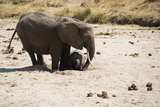
When
they went to get water, they had to dig deep, doing a face-plant into
the hole.
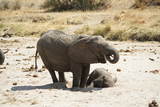
We
sat and watched elephants for a long time.
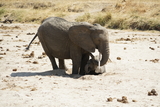
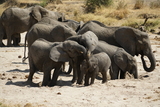
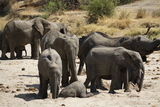
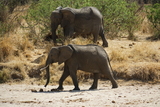
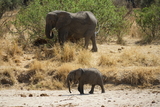
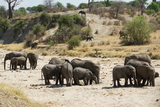
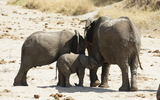
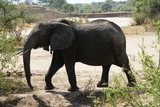
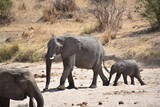

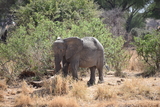
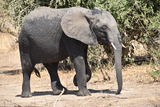
We
said goodbye to the elephants and drove a bit further on. We found
this strange antelope I didn’t recognize.
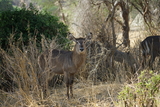
And
this strange antelope:
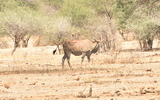
Then,
much to our surprise, we spotted a leopard who was in the process of
killing a warthog. It was quite a distance away, so kind of hard to
see.


The
leopard was exhausted from fighting the warthog to the death, so it
was tired. It temporarily left its meal and walked up the hillside
for a short rest.
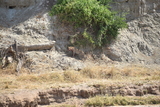
There
was a group of about a dozen elephants of all sizes nearby, and they
did something strange. They formed a circle, with everybody facing
outward, and they just stood there. We wondered what the heck they
were doing, and why. Then, as we looked closer, we saw a baby
elephant. It became obvious. They had formed a circle around the baby
to protect it from the leopard. It was like a phalanx.
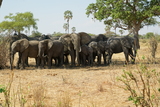
This
photo shows several generations of elephants, with the baby.
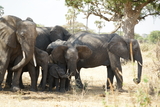
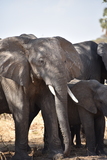
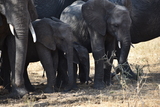
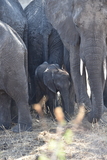
We
got a pretty good look at an ostrich.
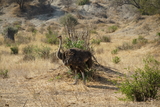
Eventually,
we arrived at our new home: It’s a lake-side cabin. There’s only
one problem: The lake is completely dry. Not a drop of water. Oh
well. The cabins are a healthy walk from the main lodge, and there
are predators out there, so we need to be escorted to and from the
cabin after dark.

This
is what the inside of our cabin looked like.
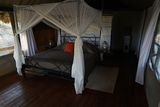
At
night, we saw several dik-diks walking around. They were really
skittish, and rightly so. We thought we spotted a predator hunting
for one, but it dashed off into the brush before we could get a good
look. We probably saved that dik-dik’s life.





































































